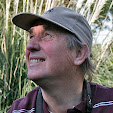It seems I might be wrong, and that Oak Tree Pug is possibly the identification. The first telling ID character (from Steve on the UKMoths group) is "the orange streak on the leading edge and trailing edge of the forewing". This is not a character I knew about and is not mentioned in "British and Irish Pug Moths" by A.M.Riley & G.Prior, but I'm now told can also be seen in Brindled. The second is given by Bill Dykes in the comment below. On the other hand Mike on UKMothsgroup says " I was happy that your pug was Brindled. I've found that Oak-tree tends to have more rounded wings and looks smaller than Brindled as a result. ak-tree also shows a broader, more definite discal spot. In saying that, the middle photo of Oak-tree on UKmoths looks very like a Brindled to me. "
So at the moment I'm not sure, and I've let the moth go. Nigel Jaman and Ben are on the side of Oak-tree and I think that is it on balance.
| Code | Taxon | Vernacular | Individuals |
| 1853 | Eupithecia dodoneata | Oak-tree Pug | 1 |
| 2182 | Orthosia cruda | Small Quaker | 1 |
| 2186 | Orthosia gracilis | Powdered Quaker | 1 |
| 2187 | Orthosia cerasi | Common Quaker | 9 |
| 2188 | Orthosia incerta | Clouded Drab | 1 |
| 2189 | Orthosia munda | Twin-spotted Quaker | 1 |
| 2190 | Orthosia gothica | Hebrew Character | 12 |
| 2243 | Xylocampa areola | Early Grey | 3 |
29 Moths of 9 Species (9 Macro)





.JPG)












The broad central forewing spot and white patch immediatly beyond make that a pretty typical Oak-tree Pug for me. I would agree with the Tawny Pinion also, but I can't say I'm an expert!
ReplyDeleteBill
Many thanks Bill
ReplyDeleteHi
ReplyDeleteBrindled Pug also show these orange streaks
Tom
Thanks Tom,
ReplyDeletethat makes it more complicated!
It is a nice fresh Oak-tree Pug, much stouter and rounder wings are diagnostic.
ReplyDeleteThanks Ben, my mentor Nigel Jarman agrees.
ReplyDelete